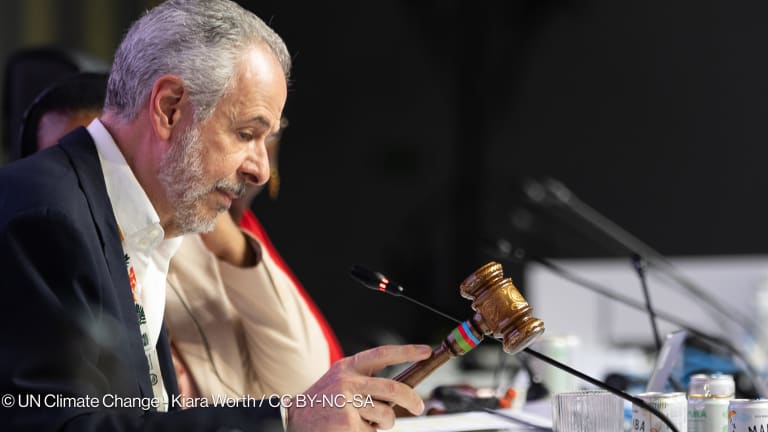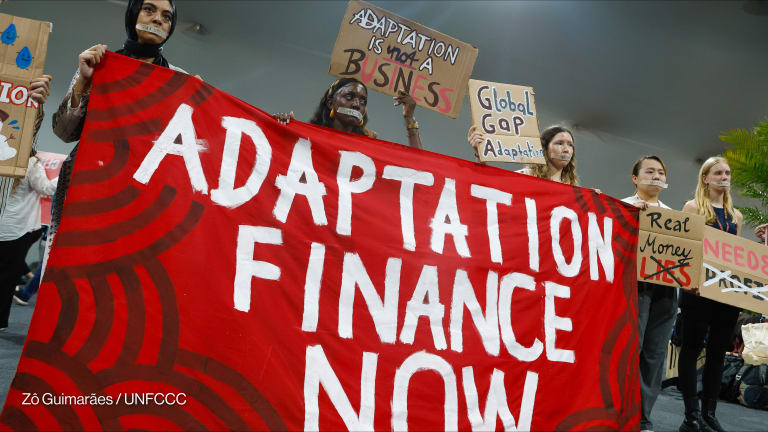Countries have agreed on a playbook for the world to increase its resilience to worsening climate shocks at the United Nations’ climate change conference, or COP 28, in Dubai. But low-income countries warned much stronger finance provisions are needed to deliver.
The framework — which was reached today following an extension of the negotiations — is intended to help nations develop adaptation plans, orient investments, and track progress on delivering on a global goal on adaptation to “enhance adaptive capacity, strengthen resilience and reduce vulnerability to climate change.”
Enhancing adaptation action is necessary to protect the lives and livelihoods of people threatened by climate impacts caused by current and future levels of warming. Scientists estimate that 3.6 billion people are highly vulnerable to climate change.








